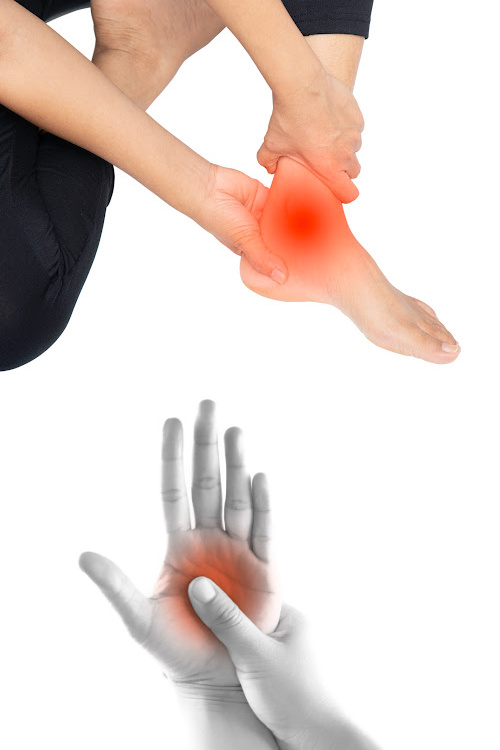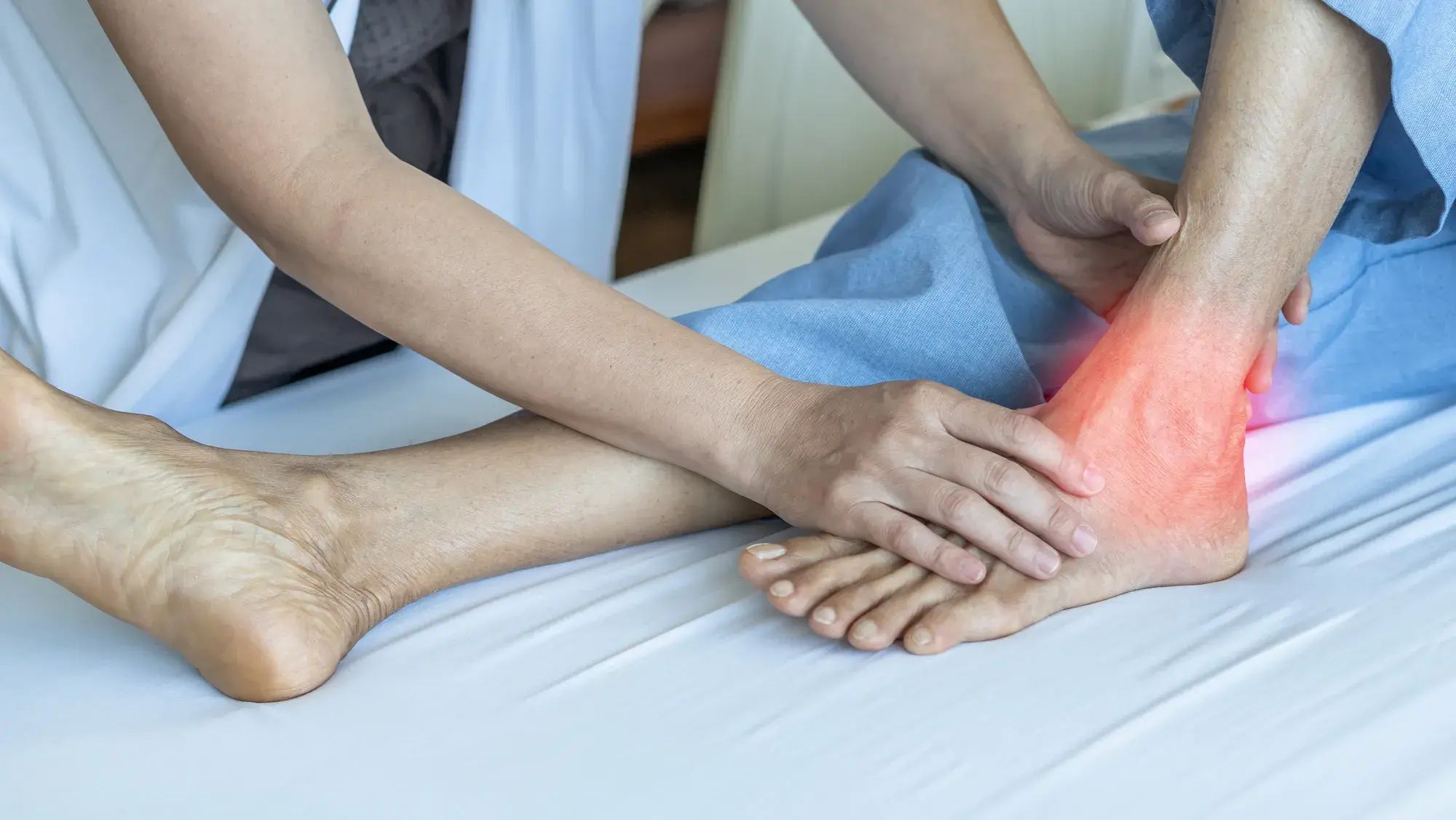Paresthesia refers to a tingling sensation often felt in the hands or feet, characterized by prickling, numbness, burning, or shooting pain. While these sensations are typically harmless, they can sometimes indicate underlying issues, especially if accompanied by symptoms like pain, headaches, vertigo, or muscle weakness. At NextPain Care, we treat chronic pain and inflammation by addressing neurological factors that may also cause tingling in the hands and feet.
The Experience Of Tingling In Feet Or Hands
Paresthesia can be described as sensations such as tingling, itching, burning, freezing, or the feeling of ants crawling on the skin. It may be accompanied by numbness or reduced sensitivity to touch in the affected area. Occasionally, individuals may experience brief, localized shooting pain. Other related symptoms can include swelling, muscle weakness, and loss of function in the affected area.
Paresthesia can occur on one or both sides of the body and often appears spontaneously. The intensity of these sensations can vary from mild to severe, and they may be intermittent or constant over time.
Other Possible Areas Of Sensation
Tingling is often not confined to the hands or feet. Prickling sensations can also occur in other parts of the body, including the back, arms, legs, toes, fingers, and heels. In some instances, people may even experience tingling in their face or scalp.
Potential Reasons Behind Tingling In Hands
There are many potential causes of paresthesia, including the following:
- Prolonged standing or sitting: This can cause a tingling sensation due to poor circulation in the legs and feet. When circulation is impaired, a lack of oxygenated blood reaches the extremities, leading to tingling sensations.
- Nerve injuries and pressure: Pressure on a nerve or an injury to the nerves can result in tingling sensations in the affected area. Irritated or damaged nerves send signals that create sensations such as tingling or prickling.
- Inflammation in the blood vessels: Blood vessel inflammation decreases the flow of oxygenated blood to the extremities, causing tingling sensations. Conditions like diabetes and lupus can lead to this type of inflammation.
- Infections: Infections such as herpes zoster (shingles) can cause tingling sensations in affected areas. Bacterial or fungal infections may also induce tingling due to the body’s response to the infection.
- Insect and other animal bites: Bites from insects or other animals can trigger tingling sensations as a reaction to the venom or infection. The tingling typically occurs in the area around the bite.
- Deficiency or abnormal levels of nutrients in the body: Essential vitamins and minerals are crucial for nerve function, and their deficiency or abnormal levels can lead to tingling sensations. For instance, a vitamin B12 deficiency can cause tingling in the hands and feet due to insufficient nourishment for the nerves.
- Consumption of certain medicines: Medications such as chemotherapy medications and anticonvulsants can cause tingling sensations due to nerve damage or inflammation.
- Nerve damage due to alcohol, smoking, and toxins: Excessive alcohol consumption, smoking, and exposure to toxins can damage nerves, resulting in tingling sensations.
Medical Conditions Leading To Tingling Or Prickling
Numerous everyday causes of tingling or prickling sensations in the hands and feet can often be managed through lifestyle adjustments. These include taking vitamin supplements, reducing alcohol intake, quitting smoking, adjusting medications, or increasing physical activity for those leading sedentary lives.
Nevertheless, in certain instances, tingling or prickling sensations may indicate an underlying medical condition, such as:
Peripheral Neuropathy
Peripheral neuropathy is a condition resulting from damage to the peripheral nerves, which are vital for transmitting signals between the brain, spinal cord, and the rest of the body. This condition can be caused by diabetes, genetic factors, autoimmune diseases, or injuries. Symptoms often include tingling sensations, numbness, weakness in the limbs, burning pain, muscle cramps, and impaired balance.
Sciatica
Sciatica occurs when the sciatic nerve becomes compressed, leading to pain that radiates from the lower back down through the hips and legs. The sciatic nerve is the longest and widest nerve in the body, running from the lower back, through the hips and buttocks, and down each leg.
Symptoms typically appear on one side of the body and can include tingling, numbness, burning pain, and muscle weakness. Common causes are spinal injuries or herniated disks.
Migraines
Migraines are severe headaches that typically manifest as intense, throbbing pain on one side of the head. They can last from several hours to several days and may be accompanied by visual disturbances, nausea, vomiting, and heightened sensitivity to light and sound. Additional symptoms might include dizziness, vertigo, fatigue, and confusion. Migraine triggers can range from stress and certain foods to changes in the weather.
Restless Leg Syndrome
Restless leg syndrome (RLS) is characterized by an uncontrollable urge to move the legs, often accompanied by tingling or prickling sensations. This condition can disrupt sleep and lead to daytime fatigue and irritability. While the exact cause is unknown, RLS is linked to iron deficiency, nerve damage, and certain medications. It is more common in older adults and can be triggered by pregnancy, specific medications, and genetic predisposition.
Tarsal Tunnel Syndrome
Tarsal tunnel syndrome results from compression or damage to the tibial nerve, which extends from the inside of the ankle to the foot. The tarsal tunnel is a narrow passageway containing arteries, veins, tendons, and nerves. Symptoms include tingling, pain, numbness, and burning sensations in the feet. Common causes are injury, repetitive stress, or underlying conditions like diabetes or arthritis.
Multiple Sclerosis (MS)
Multiple sclerosis (MS) is an autoimmune disorder affecting the brain and spinal cord. It leads to symptoms such as distorted or blurred vision, slurred speech, difficulty walking, loss of coordination, fatigue, numbness or tingling in the limbs, and limb weakness. MS involves the immune system attacking the myelin sheath, the protective covering of nerve cells.
Diabetes
Diabetes occurs when the body cannot produce or effectively use insulin, resulting in high blood sugar levels that can damage nerves. Symptoms include tingling in the extremities, excessive thirst, frequent urination, unexpected weight loss, increased appetite, blurred vision, and fatigue. Causes of diabetes include genetic factors, certain medications, infections, and other medical conditions.
Radiculopathy
Radiculopathy is a condition where the spinal nerve roots become compressed, leading to pain, numbness, tingling, or muscle weakness in the affected area. It is commonly caused by spinal injuries or conditions such as spinal stenosis or herniated discs and typically affects one side of the body.
Carpal Tunnel Syndrome
Carpal tunnel syndrome is caused by compression of the median nerve within the wrist. Symptoms include:
- Tingling in the hand and fingers
- Numbness in the hand and fingers
- Pain in the hand and fingers
- Hand weakness
- Aching or burning sensations in the palm or thumb area
- Difficulty gripping objects
It is often triggered by repetitive motions such as typing, using tools, or playing certain sports.
When Tingling Sensations Signal Something More
It is crucial to seek medical attention if tingling or prickling sensations persist, worsen, or are accompanied by other symptoms. Immediate medical evaluation is recommended if you experience any of the following symptoms along with tingling sensations:
- Uncontrollable shaking
- Severe headaches
- Muscle weakness
- Loss of vision
- Balance problems
Seek medical attention if you notice any signs of infection, such as fever, redness, or swelling in the affected area. Tingling sensations can sometimes indicate an underlying medical condition, which requires a doctor’s assessment for accurate diagnosis and treatment. Early evaluation is important to prevent further damage and worsening of symptoms.
Conventional Treatment Options
How a doctor treats the prickling or tingling sensations you’re experiencing will depend on the diagnosis. In some cases, lifestyle changes may be enough to manage symptoms and reduce discomfort. This could include exercise, getting the correct amount of rest, eating a well-balanced diet, or taking vitamin supplements.
For many medical conditions causing tingling sensations, such as diabetes or multiple sclerosis, most doctors will recommend one or more of the following conventional treatment options:
Medications can be used to manage pain and reduce inflammation. Depending on the diagnosis, a doctor may recommend over-the-counter or prescription medications such as nonsteroidal anti-inflammatory drugs (NSAIDs), steroids, tricyclic antidepressants, anticonvulsants, or opioids. These medications are designed to provide effective relief and improve the quality of life for patients experiencing tingling sensations.
- Physical or occupational therapy
Physical or occupational therapy can help manage pain and reduce inflammation. This type of treatment involves exercises, stretches, and sometimes the use of special equipment designed to alleviate symptoms. It can also involve implementing lifestyle changes such as stress-reduction techniques, ergonomic adjustments for workstations, posture correction, and nutrition advice. Physical or occupational therapy can help strengthen the muscles and joints in the affected area, improving mobility and reducing pain, which can potentially limit tingling sensations, depending on the underlying cause.
If medications and physical or occupational therapy are not providing enough relief, a doctor may recommend nerve injections. These injections can include steroids, local anesthetics, or botulinum toxins to help reduce inflammation and pain in the affected area. Nerve injections are a targeted approach that can offer significant relief for patients with persistent symptoms.
- Transcutaneous electrical nerve stimulation (TENS)
TENS is a form of electrotherapy that uses electrical signals to stimulate the nerves to reduce pain and improve circulation. It is often used to treat chronic pain, muscle stiffness, and tingling sensations. During a TENS treatment session, electrodes are placed on the skin in the affected area, and an electric current is delivered through them.
The electrical signals block pain signals from reaching the brain and can also stimulate the body to release more endorphins, which are natural pain relievers. TENS is a non-invasive procedure with few side effects and is relatively safe when used correctly, making it a valuable option for managing symptoms.






